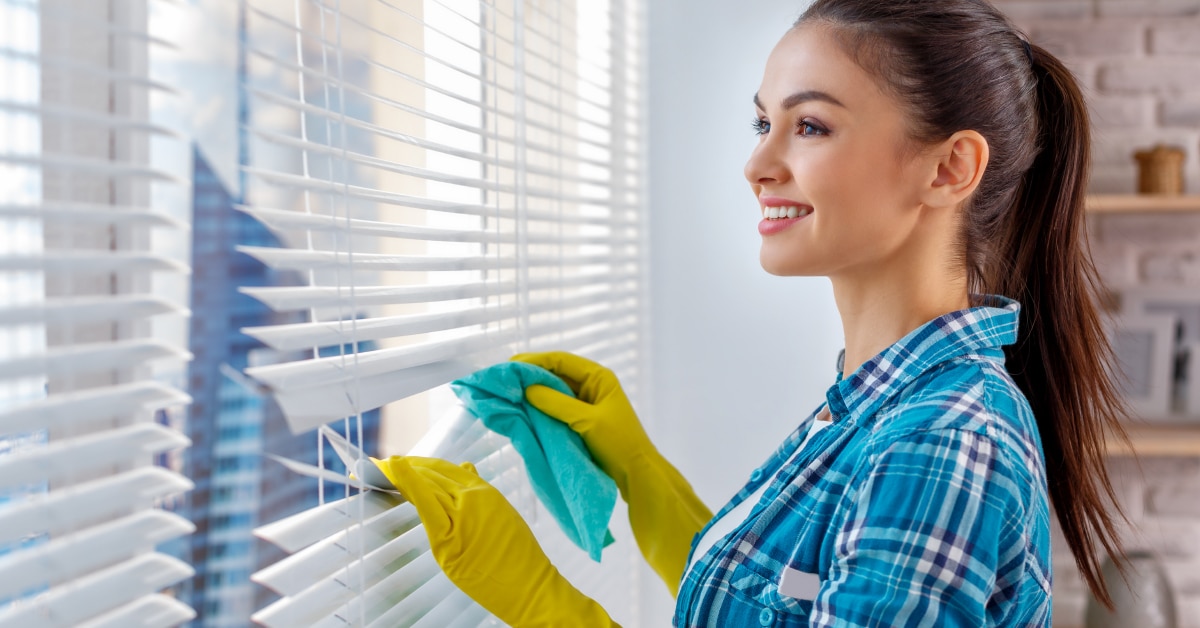Staying Safe During Spring Cleaning - NEC Coop
Mar 17, 2023 — Electrical Safety, Resources

Flowers and trees are bursting with color once more, and this means that it’s high time to begin brightening things up in your home as well. Cleaning your home thoroughly during spring is a practical tradition since your home has gathered up dust during the cold months. Finally, it is warm enough to let the fresh air in, and this presents a wonderful opportunity to run an annual safety inspection of your house.
Here are some spring cleaning safety tips.
Go over all the safety labels of your cleaning products – Take note of all safety warnings about burns, ventilation, and all other chemical hazards as they are very important. For instance, mixing ammonia and bleach creates a potentially toxic gas.
Practice ladder safety – When cleaning high areas that require a ladder like gutters, ceiling fans, or high windows, be sure to ensure that the ladder is stabilized on a level surface or ground and wear non-skid shoes. Ideally, you should have someone hold the ladder for you, but if you must use it alone, be sure to let someone in your household know.
Lift with your knees – Practice proper lifting posture when moving large objects such as furniture. For additional support, you may want to consider wearing a back brace.
Wear eye protection and a dust mask – To avoid irritation when cleaning especially dirty or dusty areas, wear a pair of goggles and a disposable dust mask.
Spring cleaning for home safety
Cleaning your gas furnace – Remove any combustible items such as paint, paper or fuel and vacuum up dust when you are replacing your furnace filter. Try not to skip your annual furnace tune-up. Remember that a professional inspection is your best protection from heat exchanger cracks, which can emit carbon monoxide into your house.
Give your dryer a deep clean – Your dryer can accumulate flammable lint particles, even if you clean the lint trap after every load. Move your dryer away from the wall in order to thoroughly clean it and be sure to wipe down every surface. If you suspect that your lint filter is clogged, you may clean it with water and a nylon brush.
Check your fire extinguisher – Every home should have a fire extinguisher. If you do have one, be sure to check its inspection tag and label for an expiration date. To ensure that it is in the proper range, check the pressure gauge. If you own a rechargeable fire extinguisher, be sure to have it professionally serviced every year.
Check your emergency detectors – Your carbon monoxide and smoke detectors should be checked with the test button and dusted regularly with a dry cloth. If your batteries are more than six months old, be sure to replace them. If your unit is past its expiration date, it’s best to replace the entire unit.
Manage your home’s electrical cords – As you go over each room in your home, check to ensure that extension and power cords do not pose a tripping hazard. Check all your cords for damage. If you spot a punctured sheath, it’s high time that you discontinue use immediately. Make sure that the cords aren’t running around door frames or under rugs too, as they can lead to damage.
Spring cleaning is a huge task, however, when you do it right and keep in mind these spring cleaning safety tips, it will leave your home comfortable, fresh, and most importantly, safe.
Sources:
“Safe spring cleaning: 12 tips,” Family Safety & Health Magazine, https://www.safetyandhealthmagazine.com/articles/20828-safe-spring-cleaning-12-tips
“7 Important Parts of a Cleaning Product Label,” The Spruce, https://www.thespruce.com/parts-of-a-cleaning-product-label-1900744
“Proper Lifting Techniques,” Mayo Clinic, https://www.mayoclinic.org/healthy-lifestyle/adult-health/multimedia/back-pain/sls-20076866
“What’s A Cracked Heat Exchanger And Why Should I Care?” AC Masters, https://acmasters.com/the-dangers-of-a-cracked-heat-exchanger/
“Do Fire Extinguishers Expire?” Impact Fire, https://resources.impactfireservices.com/do-fire-extinguishers-expire

